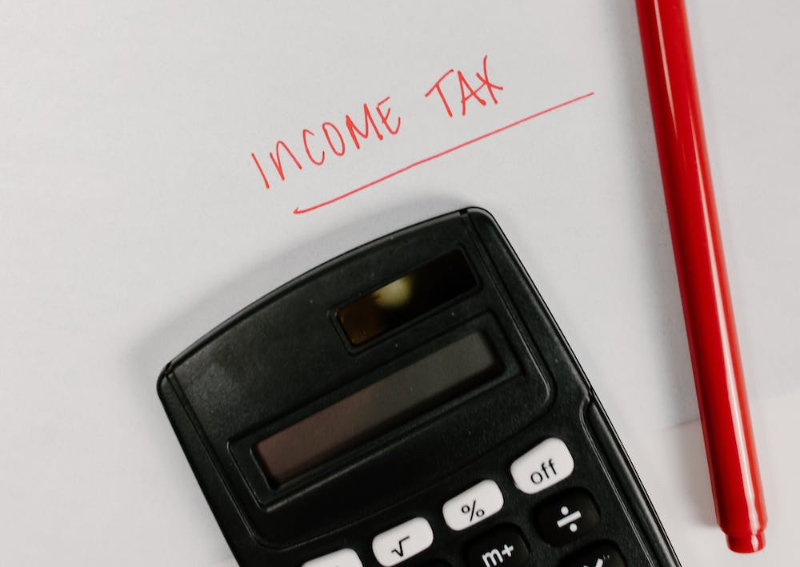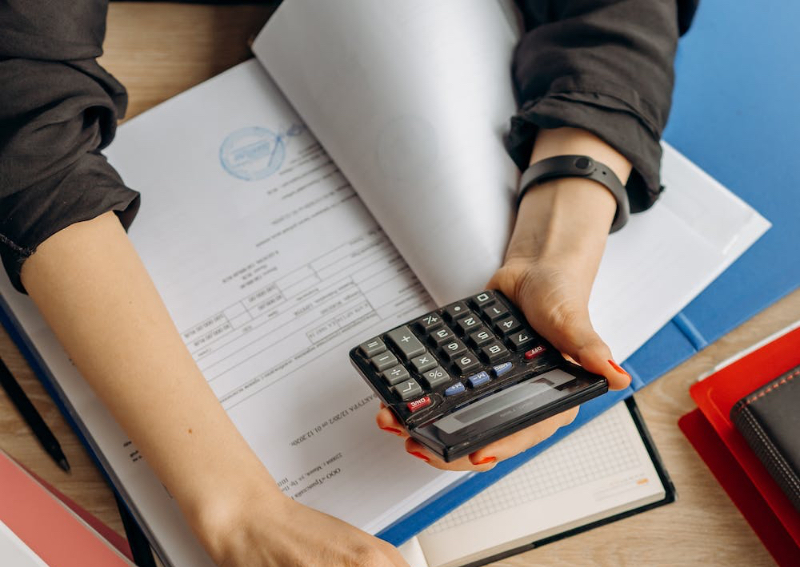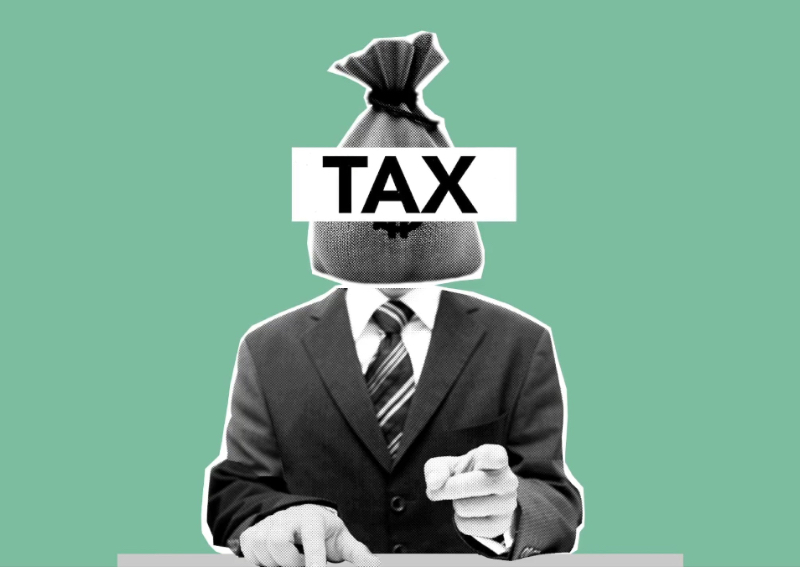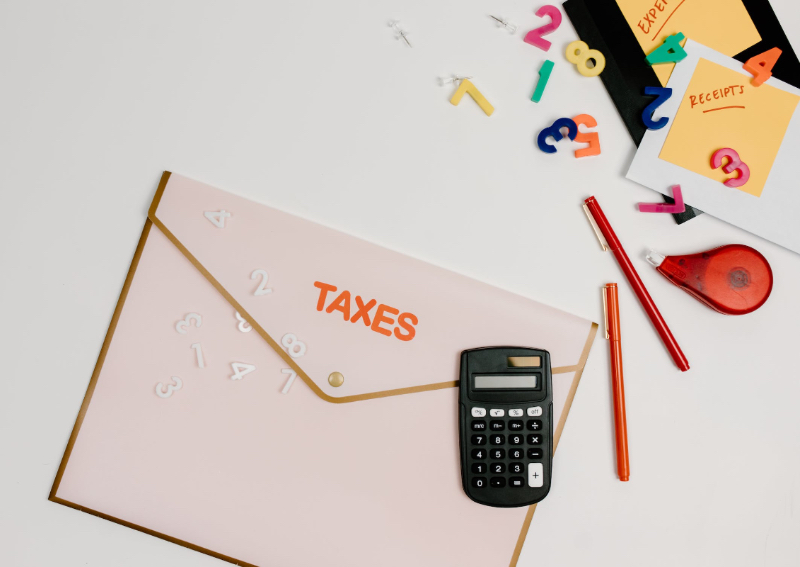10 ways to reduce your personal income tax for 2024

After the season of love in February comes a season of dread in March — yup, it's tax season.
While there's no way to avoid paying personal income taxes, there are ways you can reduce the amount of your precious earnings that you have to cough up. These include tax deductions or reliefs for retirement savings, having kids, taking care of your parents, upgrading your skills, claiming expenses, and donations.
Here's all you need to know about filing/paying for personal income tax, along with 10 tips for reducing the tax amount you have to pay up in Year of Assessment (YA) 2024.
Before we dive into the various tax relief schemes, let's do a recap of personal income tax 101. Here's how the whole tax season in 2023 is going to go down.
| Date | What happens / what you have to do |
| Feb to Mar 2023 | You get a filing notification: IRAS will send you an SMS, email, or letter to let you know if you need to file income tax for YA 2023. Spoiler: If your income was more than $22,000 in 2022, you do. |
| March 1, 2023 – April 18, 2023 | File your income tax: Log in to myTaxPortal to e-file your income tax if you need to. |
| From end Apr 2023 | Pay your income tax: You’ll receive your Notice of Assessment (a.k.a. your tax bill) from end April 2023. Pay this bill within one month via GIRO, AXS station, or Internet Banking. |
Didn't get a notification from IRAS? You can always check if you need to file your income tax using the IRAS Filing Checker or by logging in to myTaxPortal.
Got a notification that says you’re under the No-Filing Service (NFS)? Shiok, that means your income information was pre-filled for you, and you don’t need to file your taxes. However, the onus is on you to log in to myTaxPortal and check that the information is correct. If not, e-file your tax return via the same portal.

You probably know that personal income tax applies to your salary. Here’s a summary of what is included and excluded from your taxable income:
| Taxable income | Non-taxable income |
|
|
There are some grey areas. For example, money you make from selling a property is generally not taxable unless "you buy and sell property with a profit-seeking motive or deemed to be trading in properties." IRAS has their own set of criteria for deciding if you're trading property for profit or just buying/selling your home.
To be 100 per cent certain, your best bet is to refer to the IRAS page on what is and isn’t taxable in Singapore if you have any other sources of income that you’re unsure about.
After you've figured out your taxable income, the story doesn't end there.
If you're eligible for tax reliefs, these will be subtracted from your taxable income. Think of them as something like a "discount" on your taxable sum.

After tax relief deductions are made, the resulting (smaller) number is your chargeable income, which is what IRAS uses to calculate how much tax you need to pay next year.
In a formula: [Taxable income] - [Tax reliefs] = [Chargeable income]
Your income tax for YA 2023 is calculated based on what you did and what you earned in 2022.
So just like how your taxable income is based on your earnings in 2022, your tax relief eligibility also depends on your actions in 2022 — if you saved for retirement/had a kid/donated money/etc from Jan 1, 2022 to Dec 31, 2022.
While it's too late to do anything now to get more tax relief for YA 2023, you can do something this year for tax reliefs in YA 2024. Plus, you can use the information below to check which schemes you're eligible for in YA 2023.
Here are the current income tax rates for YA 2023 on your chargeable income:
| Chargeable income | Income tax | Calculation (income tax rate) |
| Up to $20,000 | None | 0 per cent |
| $30,000 | $200 | 2 per cent on $10,000 |
| $40,000 | $550 | 2 per cent on $10,000 + 3.5 per cent on $10,000 |
| $50,000 | $1,250 | 2 per cent on $10,000 + 3.5 per cent on $10,000 + 7 per cent on $10,000 |
| $60,000 | $1,950 | 2 per cent on $10,000 + 3.5 per cent on $10,000 + 7 per cent on $20,000 |
| $70,000 | $2,650 | 2 per cent on $10,000 + 3.5 per cent on $10,000 + 7 per cent on $30,000 |
| $80,000 | $3,350 | 2 per cent on $10,000 + 3.5 per cent on $10,000 + 7 per cent on $40,000 |
| $90,000 | $4,500 | 2 per cent on $10,000 + 3.5 per cent on $10,000 + 7 per cent on $40,000 + 11.5 per cent on $10,000 |
| $100,000 | $5,650 | 2 per cent on $10,000 + 3.5 per cent on $10,000 + 7 per cent on $40,000 + 11.5 per cent on $20,000 |
| $110,000 | $6,800 | 2 per cent on $10,000 + 3.5 per cent on $10,000 + 7 per cent on $40,000 + 11.5 per cent on $30,000 |
| $120,000 | $7,950 | 2 per cent on $10,000 + 3.5 per cent on $10,000 + 7 per cent on $40,000 + 11.5 per cent on $40,000 |
As you can see, your income tax rises quite sharply once your chargeable income rises above $40,000. So if you're there, you might want to find out what tax reliefs you can get to lower your chargeable income.
| Tax reliefs | Cap / estimated amount |
| CPF Top Up (your + loved ones’ SA) | $8,000 + $8,000 |
| CPF Top Up (your Medisave) | $8,000 |
| Put money in SRS account | $15,300 (Singapore Citizen/PR) or $35,700 (Foreigners) |
| Be a working mum | Potentially 100 per cent of income |
| Move in with parents / grandparents | $18,000 |
| Attend courses | $5,500 |
| Claim (non-reimbursed) employee expenses | N/A |
| Claim expenses for your business | N/A |
| Claim rental expenses | 15 per cent of rental income + home loan interest |
| Donate money, shares or other items | 250 per cent of donation value |
| Income tax relief ceiling | $80,000 |
Always keep in mind that the income tax relief ceiling is $80,000, which is the maximum relief possible to obtain.
Before you go on a crazy CPF topping up spree, you should check what reliefs you are eligible for using the IRAS Tax Relief Checker. Bear in mind that some of these are automatically calculated when you file your income tax.
Now, IRAS has more tax relief schemes than I care to count, so I’m going to try and simplify things by grouping them into six broad strategies:
The easiest and best known way to reduce your taxes is to top up your CPF accounts — the Special Account (SA) if you're below 55, and the Retirement Account (RA) if you're 55 and above, your Medisave, and your Supplementary Retirement Scheme (SRS) account. For every $1 that you put in these accounts, you get $1 deducted from your chargeable income.
Here are the current tax relief caps, which took effect on Jan 1, 2022:
| Type of tax reliefs | Maximum tax relief amount | Maximum top-up amount |
| CPF top-up (your SA) | $8,000 | Top-up cannot bring SA above Full Retirement Sum (FRS) |
| CPF top-up (loved ones’ SA/RA) | $8,000 | Top-up cannot bring SA above FRS |
| CPF top-up (your Medisave) | $8,000 | Top-up cannot bring SA above Basic Healthcare Sum (BHS) |
| Put money in SRS account | $15,300 (Singaporean) or $35,700 (foreigner) per year | $15,300 (Singaporean) or $35,700 (foreigner) per year |
CPF top-up: Perform a CPF top up to your Special Account and it will be deducted from your chargeable income, up to $8,000. You can reduce it by another $8,000 by topping up the CPF SA/RA of your parents, parents-in-law, grandparents, grandparents-in-law, spouse or siblings. This applies only up to the current Full Retirement Sum ($198,800 in 2023) — any more than that, you don’t get tax relief.
Medisave top-up: As with the CPF top-up 'trick', you can also top up your Medisave up to the Basic Healthcare Sum ($68,500 in 2023). Like the CPF SA balance, your funds will be locked up, but on the other hand you can use it for medical expenses and health insurance premiums.

Supplementary Retirement Scheme (SRS): You can further reduce your chargeable income by topping up your SRS account. An SRS account is a pseudo-CPF SA that can only be withdrawn after retirement. Make sure you invest the money in there, or it will depreciate due to inflation.
There's no need to declare your voluntary retirement top-ups, since both CPF and the three local banks operating SRS accounts will report your activities to IRAS. Do check your tax documents to make sure your contributions are reflected.
Some see babies as bundles of joy, others see them as noisy pooping machines. But maybe it's better to see them as financial assets: Not only do you get an absurd amount of money from the government's Baby Bonus, you can also get a whole slew of tax reliefs:
| Tax reliefs | For whom | Amount |
| Qualifying Child Relief / Handicapped Child Relief | Both parents, total relief to be shared | $4,000 per child / $7,500 per handicapped child |
| Working Mother’s Child Relief | Working mothers | 15 per cent for 1st child, 20 per cent for 2nd child, 25 per cent per child for 3rd child onwards |
| Grandparent Caregiver Relief | Working mothers | $3,000 for either grandparent (not each grandparent if both are caregivers) |
| Foreign Maid Levy Relief | Mothers | 2x of maid levy paid (max. 1 maid only) |
Do note that there's a total tax relief cap for the Qualifying Child Relief scheme plus Working Mother's Child Relief: $50,000 per child.
There are way too many schemes to go into detail here, so please hop over to the IRAS page for different tax reliefs for parents. For the most part, these tax deductions are automatically granted, but you should check your tax statement just in case.
As you can see, tax relief-wise, you get the most tax deductions as a working mother. Have three kids and your chargeable income can be reduced by 60 per cent! Get another $3,000 off just for having your parents babysit free-of-charge!

Wait, there’s more: The extremely generous Parenthood Tax Rebate of $5,000 for first child, $10,000 for second, $20,000 per third/subsequent child. This isn't a deduction from your taxable income — it's a straight up rebate off your income tax bill!
If this is the first time claiming your child-related tax relief, you will need to update your details when filing your taxes. Log in to myTaxPortal and go to Individuals > File Income Tax Return > Edit My Tax Form > Deductions, Reliefs and Parenthood Tax Rebate. Select the relevant scheme, key in your details and update your claim. If you got child-related tax reliefs last year, this portion will be pre-filled for you.
Next up on the government’s agenda: Finding a solution for the ageing population problem. The most obvious way out is invoke filial piety and get the elderly’s own children to care for them, right? Well guess what, there’s a parent relief tax break for that.
| Tax reliefs | Amount per dependant (max. 2) |
| Parent Relief (stay together) | $9,000 |
| Parent Relief (stay apart) | $5,500 |
| Handicapped Parent Relief (stay together) | $14,000 |
| Handicapped Parent Relief (stay apart) | $10,000 |
Though it’s called “Parent Relief”, this also applies to in-laws, grandparents, and grandparents-in-law — as long as they don’t earn more than $4,000 a year. However, you can only claim for two dependents, and you and your spouse cannot double-claim on the same person.
Assuming your retired parents are not handicapped, the maximum tax relief you can get is $9,000 x 2 = $18,000 per couple if you move in together.
If your dependent didn’t live with you, you can claim $5,500, but you have to show that you spent at least $2,000 a year supporting your dependant.
There are also tax reliefs — albeit more modest ones — for sheltering/caring for your handicapped sibling and your spouse.
Log in to myTaxPortal and go to Individuals > File Income Tax Return > Edit My Tax Form > Deductions, Reliefs and Parenthood Tax Rebate > Parent/ Handicapped Parent. Key in the relevant details and update your claim. If you claimed this tax reliefs last year, it will be pre-filled for you and you can make changes if needed.

Planning to upgrade your skills in 2023? Good for you—you’ll qualify for tax reliefs of up to $5,500 in YA 2024.
The Course Fees Relief is for you if you took a course relevant to your current employment. You can claim the amount you spent on course and exam fees and have it deducted from your chargeable income. The overall Course Fee Relief cap is $5,500, no matter how many courses and exams you took.
What if you went for a course that’s totally different in order to make a mid-career switch? Don’t throw away those invoices just yet; you can still claim the tax relief in the future when you transition to your new job.
If you’re eligible, you can file a claim for this when filing your income tax.Log in to myTaxPortal and go to Individuals > File Income Tax Return > Edit My Tax Form > Deductions, Reliefs and Parenthood Tax Rebate > Course Fees. Enter your claim amount and update the form.
Unless you're the thick-skinned type whose catchphrase is, "Can claim or not?", most of us incur some costs at work. Some of these costs can be deducted from your chargeable income.
Although you can't claim MRT fares or lunches, you might be able to subtract other employment expenses you needed for work but that your employer did not reimburse. These include things like travel costs, entertaining clients and subscriptions you paid out of your own pocket.
Thanks to Covid-19, employment expenses now also include working from home (WFH) expenses. Examples include electricity and telecommunication bills (if you can prove these went up after you started WFH) and WiFi monthly subscription fees (if you used to live under a rock and didn't have WiFi set up before you started WFH).
If you're self-employed and/or just started a side hustle, there's also a whole bunch of business expenses you can claim to reduce your chargeable income. Examples include insurance policy premium for employees, employee salaries and bonuses, R&D costs, renovation costs, and even depreciation of fixed assets.
For private hire and taxi drivers, the expenses are gauged to be 60 per cent of your driving income. If your expenses exceeded that, you can claim the actual amount.

Finally, landlords can claim expenses incurred in obtaining rental income, such as agent fees, maintenance costs and so on. The tax relief is generally calculated as 15 per cent of your rental income + whatever interest you paid on your mortgage that year.
If you're a landlord, the standard 15 per cent rental expenses will be pre-filled in your income tax form - there is no need to key in your expenses one by one. On top of the 15 per cent, you can key in the interest on your mortgage to claim.
For everything else, there are separate claim procedures and you may need to submit income tax forms to IRAS. See the individual claim types for more details.

What goes around comes around, right? For donations and tax reliefs, it’s true: Donations to Institutions of a Public Character (IPC) come with a juicy 250 per cent tax deduction. Meaning if you donate $10,000, you get 250 per cent x $10,000 = $25,000 taken off your chargeable income.
As of time of writing, a search for IPCs on the Charities.gov.sg portal turned up 674 IPCs in the likes of:
It’s not just cash donations that are eligible to that 250 per cent tax relief. Other tax deductible donations are:
So if you've inherited an amazing antique collection from your hoarder uncle… you know what to do. Just remember that any donations now (in 2023) only qualify you for tax deductions for YA 2024, not YA 2023.
How to claim: Donations to registered IPCs will be automatically submitted to IRAS for claims, so you don’t need to declare it. Note that IPCs are now required to collect the details of donors (NRIC, FIN or UEN) in order to facilitate tax deduction. If your donation is eligible, the IPC’s receipt will say “Tax-Deductible” on it.
Let’s say your projected take-home pay (excluding the compulsory CPF contributions) is $80,000 this year, which means you’ll need to pay $3,350 in income tax come YA 2024.
So what do you do? Everything in your power to get your chargeable income down to $40,000!
| Taxable income | $80,000 |
| Top up CPF SA (yours) | – $8,000 |
| Top up CPF SA (your parents) | – $8,000 |
| Put money in SRS account | – $12,000 |
| Claim course fee relief | – $5,500 |
| Claim Parent Relief for one parent | – $4,000 |
| Make $1,000 donation to IPC | – $2,500 |
| Chargeable income | $40,00 |
With your chargeable income slashed in half, you will now be billed $550 in income tax come tax season 2024. That’s basically one-sixth of your original bill — pretty dramatic, I would say.
ALSO READ: 5 best ways to reduce your income tax in Singapore (2022)
This article was first published in MoneySmart.